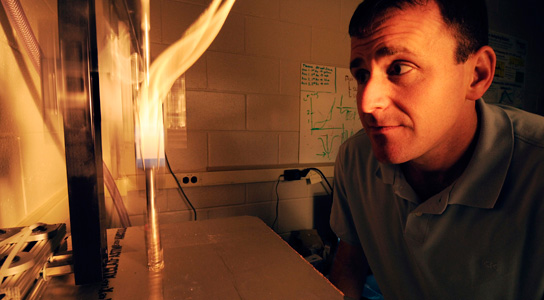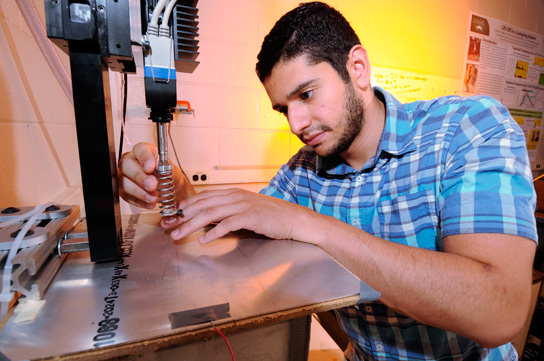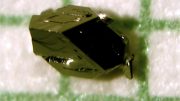
Georgia Tech Assistant Professor Daniel Goldman watches as a simple robot device executes a series of jumps designed to examine the dynamics of jumping.
Jumping is much more complicated that it might seem, at least for robots. A new study indicates that the range of future rescue and exploration robots could be extended by adopting a two-part stutter jump.
The researchers published their findings in the journal Physical Review Letters. This technique entails in taking a short hop before a big one, and could allow spring-based robots to reduce their power demands by as much as a factor of ten.

Jeffrey Aguilar, a graduate student in the George W. Woodruff School of Mechanical Engineering at Georgia Tech, adjusts a simple robot built to study the dynamics of jumping.
This formula was discovered by analyzing nearly 20,000 jumps made by a robot in the lab under a wide range of conditions. In stutter jumps, the mass is moved at lower frequency to get off the ground. The same takeoff velocity is achieved, but it is developed over a longer period with less power.
The physics of jumping were investigated by the Georgia Tech scientists to separate surface issues from the dynamics of jumping in robots. The test robot weighed 1 kg (2.2 lb) and is composed of a spring beneath a mass capable of moving up and down on a thrust rod. A computer controls the starting position of the mass on the rod, the amplitude of the motion, and the pattern of movement. A high-speed camera measured and recorded the height of each jump.
The researches thought that the optimal jumping frequency would be related to the resonant frequency of the spring and the mass system, but that wasn’t the case. Detailed evaluation of the jumps showed that frequencies above and below the resonance provided optimal jumping.
Optimizing the efficiency of jumping would allow some robots to complete longer and more complex missions. The next part involves researching how complex surfaces affect jumping.
Reference: “Lift-Off Dynamics in a Simple Jumping Robot” by Jeffrey Aguilar, Alex Lesov, Kurt Wiesenfeld and Daniel I. Goldman, 26 October 2012, Physical Review Letters.
DOI: 10.1103/PhysRevLett.109.174301









Be the first to comment on "Hopping Robots Could Use Stutter Jump to Conserve Energy"